
Penstemon palmeri, known by the common name Palmer's penstemon, is a species of perennial flowering plant in the genus Penstemon that is notable for its showy, rounded flowers, and for being one of the few scented penstemons. The plant, in the family Plantaginaceae, is named after the botanist Edward Palmer.
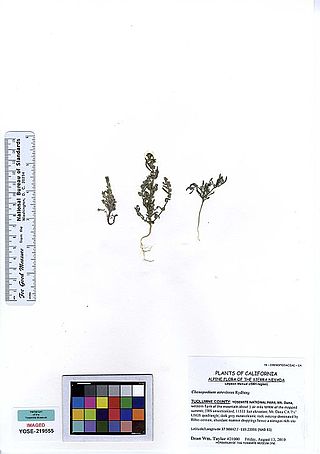
Chenopodium atrovirens is a species of flowering plant in the amaranth family known by the common names pinyon goosefoot and dark goosefoot.

Penstemon grandiflorus, known by the common names shell-leaved penstemon, shell-leaf beardtongue, or large-flowered penstemon, is a tall and showy plant in the Penstemon genus from the plains of North America. Due to its large flowers it has found a place in gardens, particularly ones aimed at low water usage like xeriscape gardens.
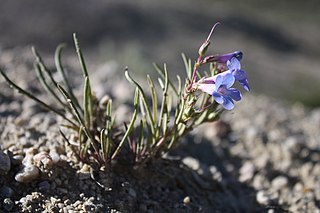
Penstemon penlandii is a rare species of flowering plant in the plantain family known by the common names Penland penstemon and Penland's beardtongue. It is endemic to Colorado in the United States, where it is known only from a strip of land about five miles long in central Grand County. There are two occurrences totalling about 8600 individuals. This is a federally listed endangered species of the United States.
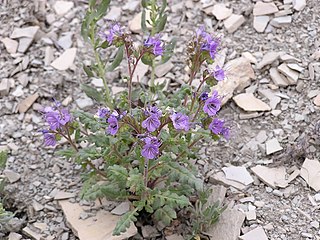
Phacelia argillacea is a rare species of flowering plant in the borage family known by the common names clay phacelia and Atwood's phacelia. It is endemic to Utah in the United States, where it is known only from one canyon in Utah County. It is "one of Utah's most endangered species"; it is "one of the nation's rarest plants" and is federally listed as an endangered species of the United States.

Hesperidanthus argillaceus, syn. Schoenocrambe argillacea, is a species of flowering plant in the mustard family, known by the common names clay reed-mustard, Uinta Basin plainsmustard, and clay thelypody.

Phacelia submutica is a rare species of flowering plant in the borage family known by the common name De Beque phacelia. It is endemic to Colorado in the United States, where it is limited to the Piceance Basin in two counties. It is threatened by petroleum exploration. It was federally listed as a threatened species of the United States on July 27, 2011, a ruling which took effect on August 26, 2011.
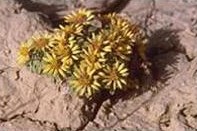
Townsendia aprica is a rare species of flowering plant in the family Asteraceae known by the common name Last Chance Townsend daisy. It is endemic to Utah in the United States, where it is known from three counties. It faces a number of threats and it is a federally listed threatened species of the United States.
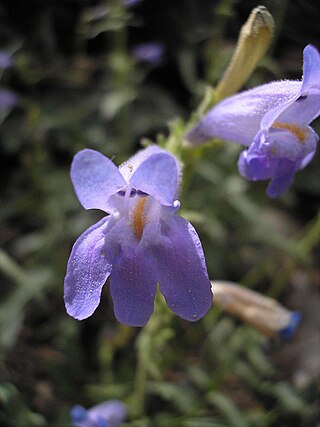
Penstemon pudicus is a rare species of flowering plant in the plantain family known by the common names bashful beardtongue and Kawich Range beardtongue. It is endemic to Nevada in the United States, where it is known only from the Kawich Range in Nye County.

Penstemon rhizomatosus is a rare species of flowering plant in the plantain family known by the common names Scheel Creek beardtongue and rhizome beardtongue. It is endemic to Nevada in the United States, where it occurs only in the Schell Creek Range of White Pine County.

Penstemon degeneri is a species of flowering plant in the plantain family known by the common name Degener's beardtongue. It is endemic to Colorado in the United States, where it occurs in and around the Arkansas River Canyon in Fremont, Custer, and Chaffee Counties.

Penstemon gibbensii is a species of flowering plant in the plantain family known by the common name Gibbens' beardtongue. It is native to the western United States, where it occurs in Wyoming, Colorado, and Utah.
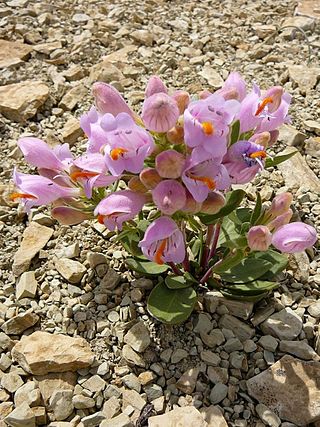
Penstemon grahamii, known by the common names Uinta Basin beardtongue and Graham's beardtongue, is a species of flowering plant in the plantain family. It is native to Utah and Colorado in the United States.
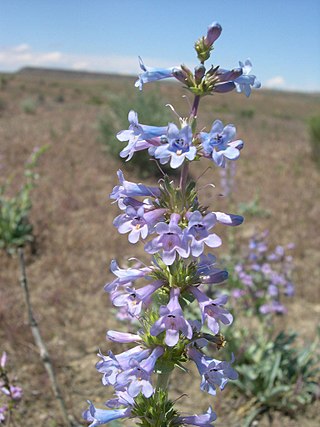
Penstemon acuminatus is a species of flowering plant in the plantain family known by the common names sharpleaf penstemon and sand-dune penstemon. It is native to the northwestern United States, where it occurs in Washington, Oregon, Idaho, Utah, and Nevada.
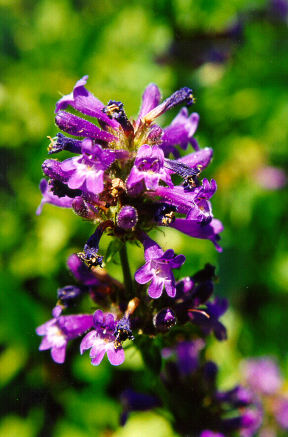
Penstemon attenuatus is a species of flowering plant in the plantain family known by the common names sulphur penstemon and taperleaf beardtongue. It is native to the northwestern United States.
Astragalus wetherillii is a species of flowering plant in the legume family known by the common name Wetherill's milkvetch. It is native to Colorado and Utah in the United States.

Penstemon eriantherus is a species of flowering plant in the plantain family known by the common names fuzzytongue penstemon and crested beardtongue. It is native to western North America, where it occurs in western Canada and the northwestern and north-central United States.
Penstemon franklinii, or Franklin's penstemon, is a plant species endemic to Utah, United States, known only from Cedar Valley in Iron County. It grows in grasslands and in sagebrush communities.
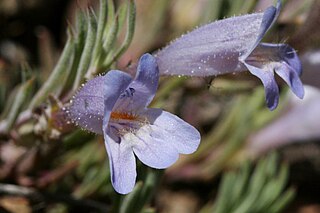
Penstemon caespitosus, commonly known as mat penstemon, is a summer blooming perennial flower in the large Penstemon genus. It is a widespread plant from near timberline to the foothills in the Southern Rocky Mountains and Colorado Plateau in North America. It is noted for its ground hugging growth habit and as a plant used in xeriscape and rock gardening.

Penstemon arenicola, commonly known as Red Desert penstemon, is a species of plant from the Western United States. It primarily grows in Wyoming, but it also grows in small areas of Colorado and Utah. It is a short plant known for growing in sand as referenced by its scientific name.



















